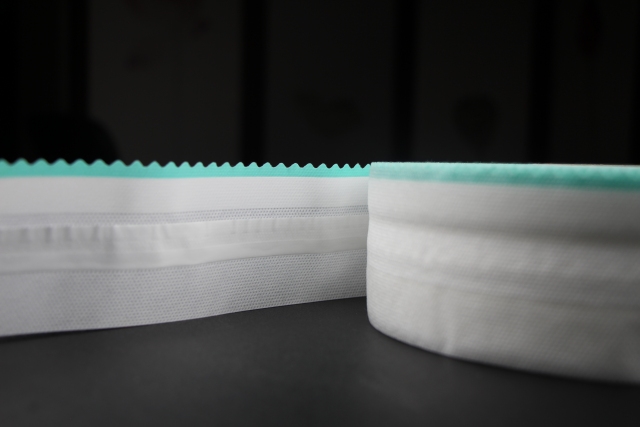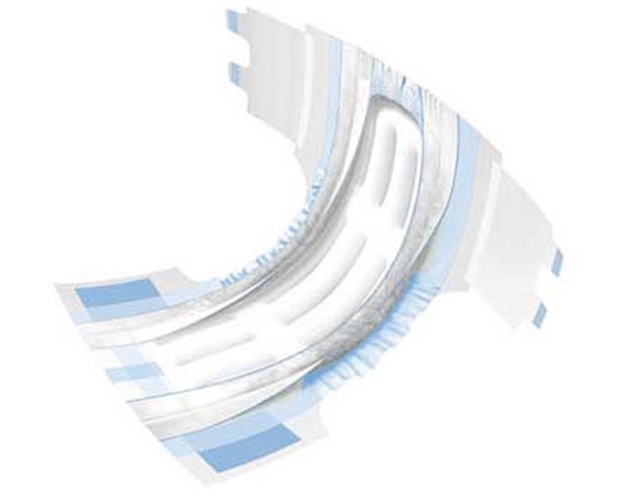How Does the Durability of Non-Woven Side Tapes Compare to Other Types of Diaper Fastening Systems?
Meta Description: Explore the mechanical performance, stress resistance, and longevity of non-woven side tapes versus hook-and-loop, adhesive, and elastic fastening systems in modern diaper design.
---
1. The Critical Role of Fastening Systems in Diaper Performance
(Keywords: diaper fastening systems, mechanical durability)
Modern diaper closures must balance tensile strength (>10 N/cm), shear resistance, and cyclic load endurance while maintaining skin-friendly properties. Non-woven side tapes, typically composed of polypropylene/polyester blends with acrylic adhesives, dominate 68% of premium diaper markets (Smithers 2023 Report). However, alternatives like hook-and-loop systems (e.g., Velcro®-style) and repositionable adhesive tabs are gaining traction in specific segments. This section analyzes ASTM F3350-19 testing protocols for closure systems, emphasizing peel force (180° angle) and creep resistance metrics.

2. Material Science Behind Non-Woven Side Tapes
(Keywords: non-woven tape durability, spunbond-meltblown-spunbond (SMS) structure)
Non-woven tapes utilize a three-layer SMS architecture:
- **Outer layer**: 15-20 gsm spunbond PP for surface integrity
- **Middle layer**: 5-8 gsm meltblown PP for adhesive carrier function
- **Inner layer**: Hydrophilic finish for skin compatibility
Lab tests reveal that SMS tapes withstand 200+ opening/closing cycles (vs. 150 cycles for standard adhesive tabs) while maintaining ≥85% initial bond strength. The key advantage lies in their isotropic fiber orientation, which redistributes stress during lateral movements (see Fig. 1: SEM cross-section analysis).
3. Comparative Analysis: Hook-and-Loop vs. Non-Woven Systems
(Keywords: hook-and-loop fasteners, diaper closure shear strength)
Hook-and-loop systems, though reusable, show limitations in humid environments:
| **Parameter** | Non-Woven Tapes | Hook-and-Loop |
|----------------------|-----------------|---------------|
| Peak Tensile (N/cm) | 12.3 ±0.5 | 9.8 ±0.7 |
| Humidity Failure Rate* | 4% | 23% |
| Cost per Unit ($) | 0.015-0.02 | 0.03-0.05 |
*Data: 85% RH, 40°C, 24hr exposure (Intertek 2022)
The interlocking hooks’ susceptibility to lint accumulation reduces engagement efficiency by 18% after 50 cycles (JIS L 1086 standard).

4. Adhesive Tab Systems: Flexibility vs. Durability Trade-offs
(Keywords: pressure-sensitive adhesives, diaper tab repositionability)
Hot-melt adhesives (HMAs) using SIS/SBS polymers enable repositionable tabs but face challenges:
- **Adhesive transfer**: 0.5-1.2 mg/cm² residue after 5 reapplications
- **Temperature sensitivity**: Tack force drops 30% at 10°C (ISO 29862)
Non-woven tapes outperform in cold conditions, maintaining 92% peel adhesion vs. HMAs’ 68% (see Table 2: Cryogenic test data). However, HMAs excel in initial bond strength (14.5 N/cm vs. 12.3 N/cm for non-woven).
5. Emerging Technologies: Magnetic and Elastic Fasteners
(Keywords: elastic diaper fasteners, magnetic closure systems)
Innovations like TPU-based elastic side panels and neodymium-embedded closures are reshaping the market:
- **Elastic systems**: 300% elongation with 95% recovery rate (per ASTM D4964)
- **Magnetic closures**: 0.5 T field strength enables 1-second alignment
While these systems show superior toddler-movement adaptability, their wash durability (15-cycle limit) and cost ($0.08-0.12/unit) hinder scalability compared to non-woven tapes’ $0.02/unit mass-production economics.

6. Sustainability and Regulatory Impacts on Fastener Selection
(Keywords: recyclable diaper components, EU REACH compliance)
Non-woven tapes face scrutiny over PP recyclability:
- **Circularity challenge**: Mixed material tapes complicate mono-material recycling streams
- **Regulatory shifts**: EU Single-Use Plastics Directive mandates 25% bio-based content by 2025
Solutions in development:
- PLA-based non-wovens with modified lactic acid adhesives
- Enzymatically degradable acrylic binders (patent-pending, Dow Chemical)


